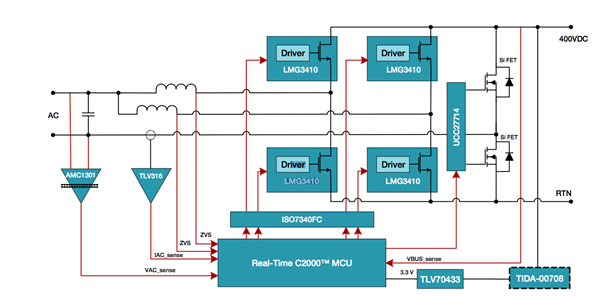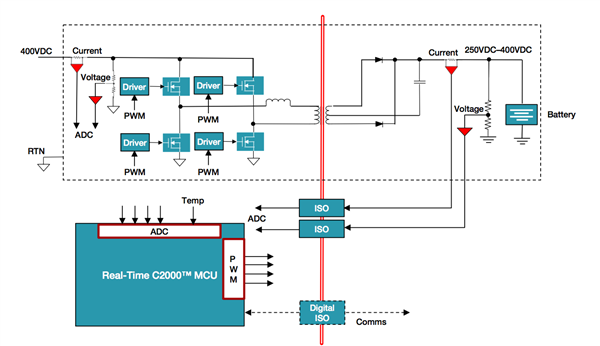SSZTA26 july 2017 LMG3410R070
As the green movement increases in popularity, more and more electric vehicles (EVs) of all kinds – from electric scooters and cars to buses and cargo trucks – will take to the roads. The challenge for power designers will be to provide systems that are adaptable to a wide variety of battery types and vehicles with vastly diverse performance requirements.
Charging and discharging the battery efficiently is important, as it avoids thermal runaways or other conditions that would either reduce the battery’s capacity or its life span. Charge/discharge functionality requires a certain amount of intelligence in the controlling microcontroller (MCU), since the parameters of the battery itself will change over time. The MCU responsible for actually charging the battery must be able to quickly adjust and adapt in real time to the battery’s changing properties, like oxidation on the terminals or cell voltages.
During charging, the MCU must be able to respond quickly to overvoltage conditions; otherwise, the battery may overheat and catch on fire. When designing battery-charging modules such as an on-board charger, higher-order MCUs featuring digital signal processor (DSP) cores and specialized co-processors or hardware-based accelerators can meet the specific real-time operational needs for closed-loop control of the on-board charging input current, intermediate DC bus voltage, battery charging current and battery terminal voltage.
Control loops require the use of computationally intensive algorithms such as a proportional-integral-derivative (PID) controller or two-pole two-zero compensators. A MCU with a DSP core or cores running instruction sets supporting special trigonometric math operations can significantly reduce the number of processor cycles needed for these algorithms. For example, where a reduced instruction set computing (RISC) core might need 60 cycles to complete a math-intense sine or cosine operation, a DSP core could achieve the same result in two or three cycles. MCUs can also support multiple power topologies and multiple control loops for voltage and current, plus other system parameters with such high performance that minimizes “missing” changes in battery characteristics.
EV and power-supply manufacturers can take advantage of the adaptability and versatility of digital power MCUs by leveraging the same software framework to control similar power topologies with different power ratings, different input/output voltages and different pulse-width modulation (PWM) frequencies. For intelligent battery-management and charging system, the same software developed for a specific topology (such as totem-pole power factor correction [PFC] or resonant [LLC] full-bridge DC/DC) using a digital power MCU or family of MCUs is reusable from low to high power, with changes only to the digital control parameters and a few software parameters related to the new power stage. Thus, digital power MCUs let manufacturers effectively reuse or reapply their investments in power-control software over and over again with a wide range of power ratings that meet application requirements. This adaptability is particularly important as innovations and new materials are introduced into power-stage components.
 Figure 1 C2000™ MCU Controlling a
Two-Phased Interleaved Totem-Pole PFC
Figure 1 C2000™ MCU Controlling a
Two-Phased Interleaved Totem-Pole PFC Figure 2 C2000 MCU Controlling a
Full-Bridge LLC DC/DC
Figure 2 C2000 MCU Controlling a
Full-Bridge LLC DC/DCC2000™ MCUs offer embedded real-time control solutions for EVs that require efficient power conversion and high-performance motor-control technology. They enable advanced technology for EV on-board battery chargers and DC/DC converters with precise waveform control, regardless of topology.
C2000 MCUs also help minimize energy loss by building platforms that monitor power conversion to and from the battery, as well as improving power-conversion efficiencies by single-digit percentage points. In addition, TI’s C2000 MCU-based TI reference designs show expertise-enabled solutions for rapid evaluation and development of your power-conversion application.